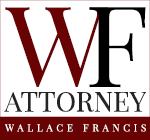There are a lot of very effective tactics at play in family law litigation in the great state of California. Among the very best is the use of documentation to provide factual evidence of what is actually transpiring. There are a great number of people who believe eyewitness testimony, cross-examination, and judicial determinations of credibility are the crucible by which justice emerges from the shadows of the family court and into the shining sun. Historically, Americans have had great faith in the use of eyewitness testimony. The only problem is that scientific research shows our belief is not based upon scientific evidence.
Scientific American’s Jan.8, 2009 article ”
Why Science Tells Us Not to Rely on Eyewitness Accounts
Reconstructing Memories
The uncritical acceptance of eyewitness accounts may stem from a popular misconception of how memory works. Many people believe that human memory works like a video recorder: the mind records events and then, on cue, plays back an exact replica of them. On the contrary, psychologists have found that memories are reconstructed rather than played back each time we recall them. The act of remembering, says eminent memory researcher and psychologist Elizabeth F. Loftus of the University of California, Irvine, is “more akin to putting puzzle pieces together than retrieving a video recording.” Even questioning by a lawyer can alter the witness’s testimony because fragments of the memory may unknowingly be combined with information provided by the questioner, leading to inaccurate recall.
Many researchers have created false memories in normal individuals; what is more, many of these subjects are certain that the memories are real. In one well-known study, Loftus and her colleague Jacqueline Pickrell gave subjects written accounts of four events, three of which they had actually experienced. The fourth story was fiction; it centered on the subject being lost in a mall or another public place when he or she was between four and six years old. A relative provided realistic details for the false story, such as a description of the mall at which the subject’s parents shopped. After reading each story, subjects were asked to write down what else they remembered about the incident or to indicate that they did not remember it at all. Remarkably about one third of the subjects reported partially or fully remembering the false event. In two follow-up interviews, 25 percent still claimed that they remembered the untrue story, a figure consistent with the findings of similar studies.
That is exactly why documentation plays a key roll in California family law cases, and marshaling factual information in the form of documentation can yield great results. Family law attorneys know this, which is why they invented a means by which they can frustrate this technique. How do they do it? Simply create more paper.
Although people often imagine Judges sit back in their chambers reviewing case files in order to be adequately prepared to hear cases, the reality is that they don’t often have time to do that. Your file sits on a shelf, unopened, waiting for someone to come along and open it and give it a peek. Many family courts do not have research attorneys. That means the Judge often depends upon your attorney to tell the story, present the appropriate law, and allow them to make a decision on this specious evidence. Like it or not, that is how it works. You get better results with shorter pleadings, shorter declarations, and simpler declarations.
It is instinct to believe that if you file the Enclopedia Brittanica in your motion, you will really hit home your point. The only thing you really do is make sure nobody reads what you wrote. This is why, in high-conflict cases, the bad actor has a huge advantage. They have had years to create a false narrative and bury the truth under piles of paper, and they can keep doing it until they win.

